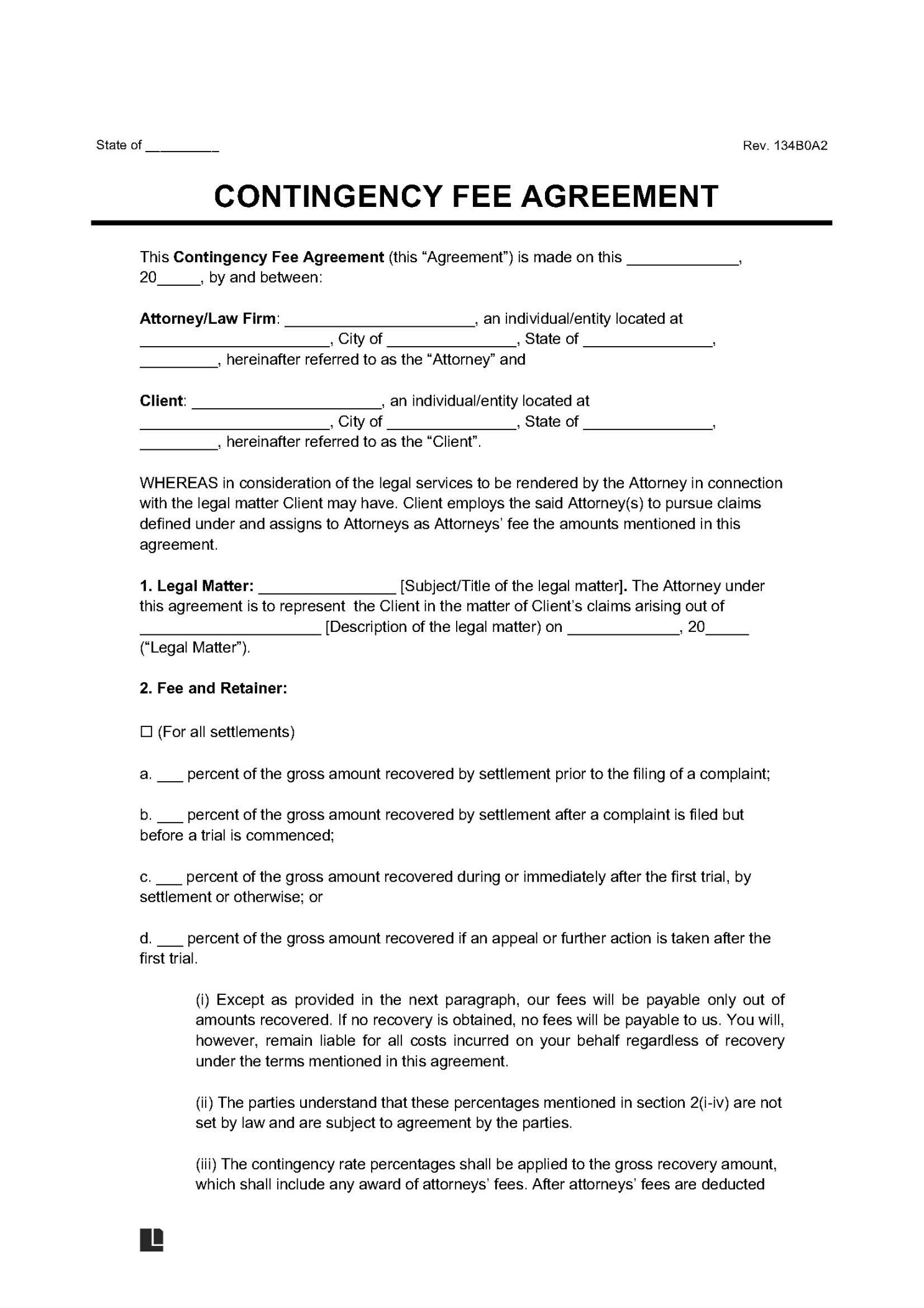A contingency fee agreement is a legal contract between a client and an attorney that specifies the terms under which the attorney will represent the client in a legal matter. In a contingency fee arrangement, the attorney’s fee is contingent upon the outcome of the case. If the client is successful in their claim, the attorney will receive a percentage of the settlement or judgment. However, if the client is unsuccessful, the attorney will not receive any fees.
Key Elements of a Contingency Fee Agreement

A well-crafted contingency fee agreement should include the following essential elements:
1. Identification of the Parties
Clearly identify the parties involved in the agreement. This includes the client’s name, address, and contact information, as well as the attorney’s name, firm name, address, and contact information.
2. Scope of Representation
Define the specific legal matter for which the attorney will be representing the client. This should include a detailed description of the case, the claims being made, and the potential defenses.
3. Contingency Fee Percentage
Specify the percentage of the settlement or judgment that the attorney will receive as their fee. This percentage should be clearly stated and agreed upon by both parties.
4. Fee Structure
Outline the specific fee structure, including any additional fees or costs that the client may be responsible for. This may include court costs, filing fees, expert witness fees, and other expenses related to the case.
5. Client’s Obligations
Clearly state the client’s obligations under the agreement. This may include providing necessary documentation, cooperating with the attorney, and following the attorney’s instructions.
6. Attorney’s Obligations
Outline the attorney’s obligations under the agreement. This may include diligently representing the client, communicating with the client, and keeping the client informed of the progress of the case.
7. Termination of the Agreement
Specify the circumstances under which the agreement may be terminated. This may include the client’s failure to fulfill their obligations, the attorney’s withdrawal from the case, or the settlement of the case.
8. Governing Law
Indicate the governing law that will apply to the agreement. This will help to resolve any disputes that may arise between the parties.
9. Dispute Resolution
Specify the method for resolving any disputes that may arise between the parties. This may include mediation, arbitration, or litigation.
10. Signatures
Both the client and the attorney should sign the agreement to indicate their acceptance of its terms.
Design Elements for a Professional Contingency Fee Agreement
To create a contingency fee agreement that conveys professionalism and trust, consider the following design elements:
Clear and Concise Language: Use simple, straightforward language that is easy to understand. Avoid legal jargon that may confuse the client.
Conclusion
A well-crafted contingency fee agreement is an essential tool for protecting the interests of both the client and the attorney. By carefully considering the key elements and design elements outlined above, you can create a professional and effective contingency fee agreement that fosters trust and confidence.